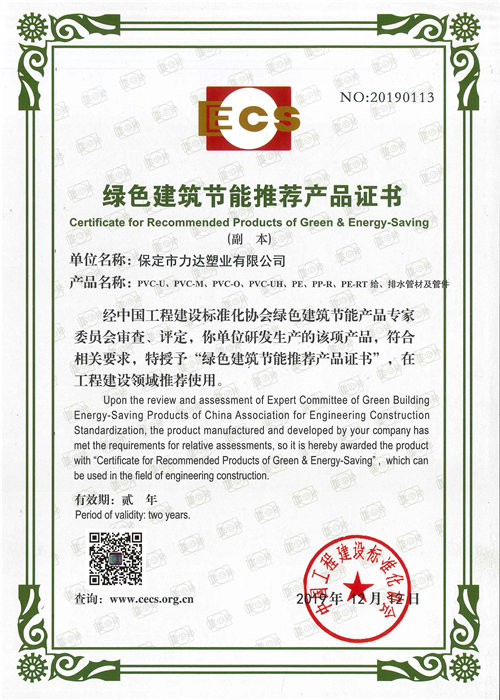dec . 10, 2024 00:00 Back to list
HDPE Pipe Coupling Guide for Efficient and Durable Connections in Piping Systems
Understanding HDPE Pipe Coupling An Essential Component in Modern Infrastructure
In the landscape of modern infrastructure, the importance of efficient and durable plumbing systems cannot be overstated. High-Density Polyethylene (HDPE) pipe has emerged as a preferred choice for a variety of applications, ranging from water supply to drainage systems. An integral part of these piping systems is the HDPE pipe coupling, a component that plays a crucial role in ensuring fluid integrity and reliability.
What is HDPE?
HDPE is a type of plastic known for its strength and durability. It is made from petroleum and is characterized by its high tensile strength and resistance to impact. This material is particularly favored in the construction and plumbing industries due to its lightweight nature, which makes it easier to transport and install compared to traditional materials like metal or concrete. Additionally, HDPE is resistant to corrosion and can withstand a wide range of temperatures, making it suitable for various environmental conditions.
The Role of Couplings in HDPE Systems
Pipe couplings are essential components used to connect two pieces of pipe together. They provide a secure and leak-proof joint, which is critical for maintaining the efficiency of a piping system. In HDPE systems, couplings can be manufactured in various sizes and shapes to accommodate different pipe diameters and configurations. They come in several types, including compression fittings, mechanical couplings, and molded fittings, each serving specific purposes depending on the application requirements.
1. Compression Couplings These are designed to create a tight seal by compressing the pipe ends together using a set of screws or bolts. They are easy to install and can be used for both permanent and temporary connections.
2. Mechanical Couplings Mechanical couplings typically consist of a coupling body and a gasket or sealing ring, which creates a watertight seal. These are particularly useful for transferring fluid under pressure and are often used in larger diameter pipes.
3. Molded Couplings These are formed from a single piece of HDPE, which ensures uniformity and strength. Molded couplings are often employed in more demanding applications where high durability is required, such as in industrial settings.
hdpe pipe coupling

Benefits of HDPE Pipe Coupling
The use of HDPE pipe couplings offers several advantages that contribute to their growing popularity
- Durability HDPE is inherently resistant to corrosion, chemicals, and UV rays, which can significantly extend the lifespan of both the pipes and couplings, reducing the need for frequent replacements.
- Flexibility The flexibility of HDPE allows it to withstand ground movements and shifts, which is particularly beneficial in areas prone to earthquakes or soil erosion.
- Cost-Effectiveness While the initial installation cost might be higher than that of traditional materials, the long-term savings on maintenance and durability make HDPE systems more economical over time.
- Easy Installation HDPE pipe couplings are designed for quick and straightforward installation, reducing labor costs and project timelines. Many types of couplings can be installed using simple tools without the need for specialized skills.
- Environmental Sustainability HDPE is a recyclable material, and its long lifespan means fewer materials will end up in landfills. Moreover, the energy consumed during the production and transportation of HDPE piping systems is often lower than that for traditional materials.
Conclusion
In summary, HDPE pipe couplings are a crucial component in modern plumbing and construction applications. Their ability to provide durable, flexible, and cost-effective solutions has made them a favorite choice among engineers and contractors alike. As infrastructure needs continue to grow and evolve, the reliance on advanced materials like HDPE and their associated components, such as couplings, will only increase, ensuring a sustainable and efficient future for our water supply and drainage systems. Understanding the specifics of HDPE and its couplings is vital for anyone involved in design, construction, or maintenance activities within these fields, underlining the critical role these components play in the effectiveness and resilience of our built environment.
-
HDPE Natural Sheet: Durable, Food-Grade & Versatile Plastic Solutions
NewsAug.27,2025
-
Durable Glossy PVC Rigid Sheet | Premium High-Shine Panels
NewsAug.26,2025
-
Durable PP Rigid Sheet: Lightweight, Chemical Resistant Solutions
NewsAug.21,2025
-
PVC Grey Sheet for Extraction: Chemical Resistant & Durable
NewsAug.19,2025
-
Durable PVC Pipe Fittings for Plumbing & Irrigation Needs
NewsAug.18,2025
-
HDPE Steel Belt Reinforced Spiral Corrugated Pipe | High Strength
NewsAug.17,2025

